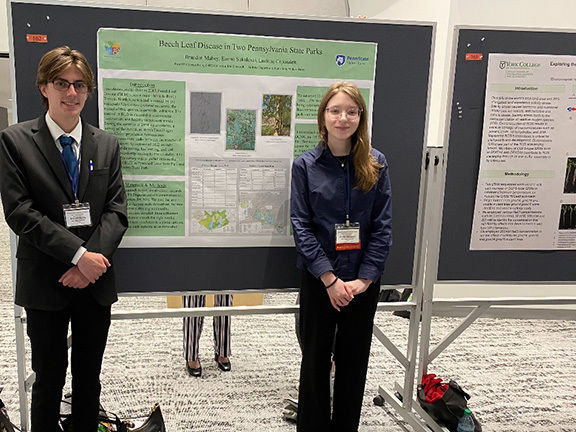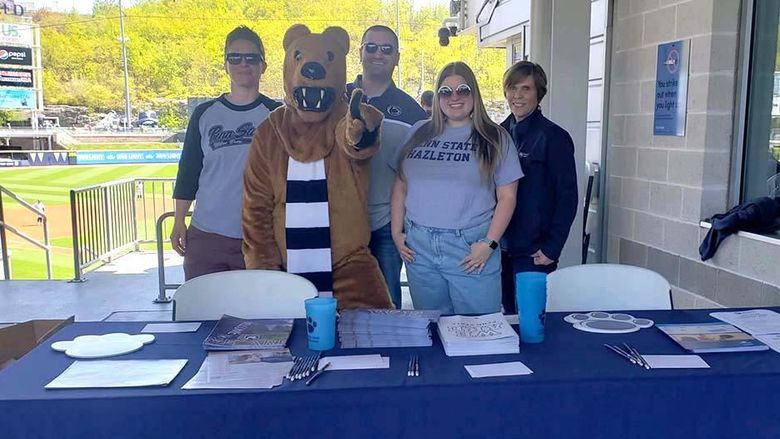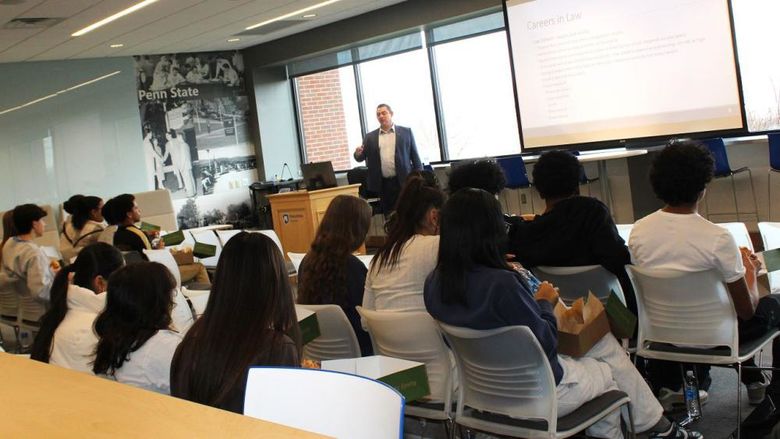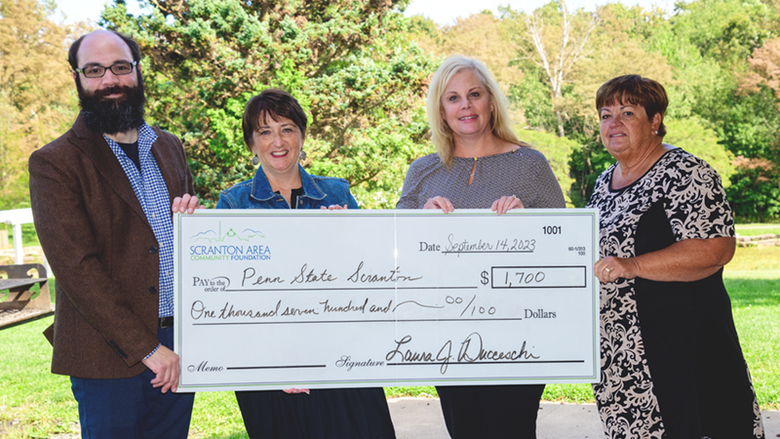
Brandon Mabey, a first-year student at Penn State Scranton, and Emma Sokaloski, a second-year student at Penn State Wilkes-Barre, worked with Luciana Caporaletti, lecturer in biology at Penn State Wilkes-Barre, on a research project presented at the Pennsylvania Academy of Science's annual meeting.
DALLAS, Pa. — Two Penn State Commonwealth Campus students and one faculty member were selected to present their research on beech leaf disease in two Pennsylvania state parks during the 100th annual meeting of the Pennsylvania Academy of Science (PAS), which took place April 11-13 at the Harrisburg University of Science and Technology.
PAS focuses on advancing the “pursuit and application of science within the commonwealth,” among other goals, according to the organization’s website. The annual meeting showcases work in academia and industry across the state.
Emma Sokaloski, a second-year student at Penn State Wilkes-Barre majoring in biology, and Brandon Mabey, a first-year student at Penn State Scranton majoring in pre-medicine and a previous dual-enrollment student at Penn State Wilkes-Barre, worked with Luciana Caporaletti, lecturer in biology at Penn State Wilkes-Barre, on the research project, “The Presence of Beech Leaf Disease in Two Pennsylvania State Parks.”
The research occurred during the summer of 2024 at Promised Land State Park and Francis Slocum State Park. Caporaletti, Sokaloski and Mabey obtained permits from the Pennsylvania Department of Conservation and Natural Resources (DCNR) and surveyed beech trees in both parks for beech leaf disease. The disease, characterized by color and shape changes in the leaves of beech trees, was first identified in Ohio in 2012 and is caused by an invasive nematode. By identifying and reporting symptomatic trees to authorities, the team said they aim to help slow the spread of beech leaf disease, which can be deadly to the trees.
In total, they examined 1,394 beech trees in Promised Land, of which 1,166 were symptomatic, and 26 beech trees in Frances Slocum, of which none were symptomatic.
“We recognize that this may be an underestimate, as some trees may be diseased without showing signs,” Caporaletti said. “This baseline data is important for agencies such as DCNR, the U.S. Forest Service and the National Park Service to track the spread of this disease across the U.S. It also aids in forest management, as it specifically targets this tree species for conservation.”
Caporaletti also noted the benefits of research to the students.
“Student research has so many benefits,” Caporaletti said. “In addition to learning about a particular species, student researchers also learn how to collaborate, plan, design research, manage their time, manage trial and error, collect data in the field and communicate.”
The project was the first field research project both students have completed.
“I had originally talked to Professor Caporaletti about her work in Peru and it really made me interested in doing my own field research,” Sokaloski said. “Additionally, I've always been fascinated with the impacts of invasive species. I grew up hiking and exploring the outdoors, which further led to my interest in field research. Professor Caporaletti is extremely knowledgeable in the field and helped me improve my skills in plant identification tremendously.”
Mabey agreed that the experience provided many learning opportunities.
“I learned the impact the disease has had on beech trees and the overall detriment it places on the state parks, complemented by the lack of conservation and knowledge around beech leaf disease,” Mabey said. “Although I am a pre-med student, this research supported my insight into parasitology, which is one of my growing interests and something I intend to study further as I continue research.”
Sokaloski said she thinks this research project will be beneficial as she continues to study biology.
“In the future, I'd love to continue doing field research and lab work,” she said. “I feel that this experience gave me a roster of new skills, such as plant identification, navigation, collaboration with state agencies and many transferable skills that I can apply in my future academics and careers.”
Sokaloski presented the team’s research during Penn State Wilkes-Barre’s Celebration of Scholarship research fair and Caporaletti presented it at University Park through the Penn State Plant Institute’s “Branching Out” series about plant research at Commonwealth Campuses.




